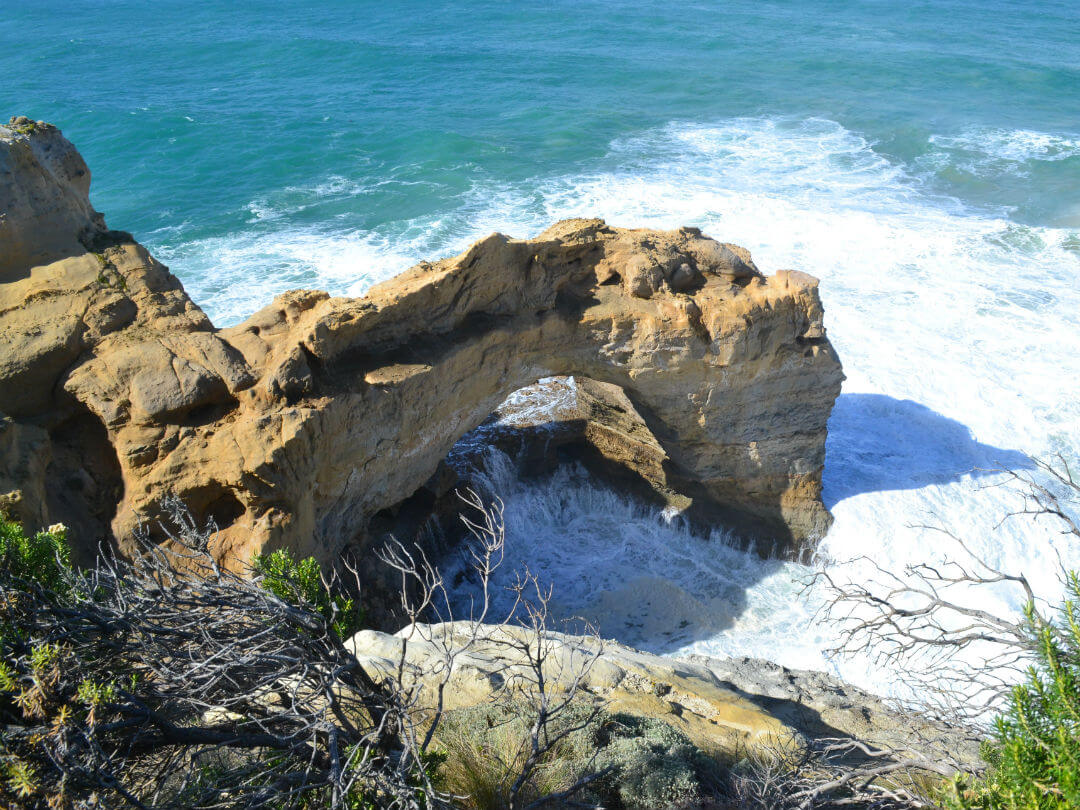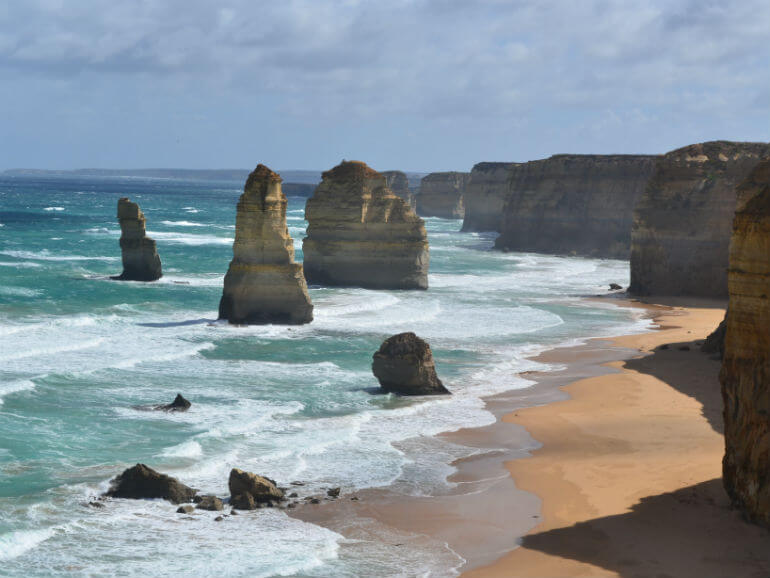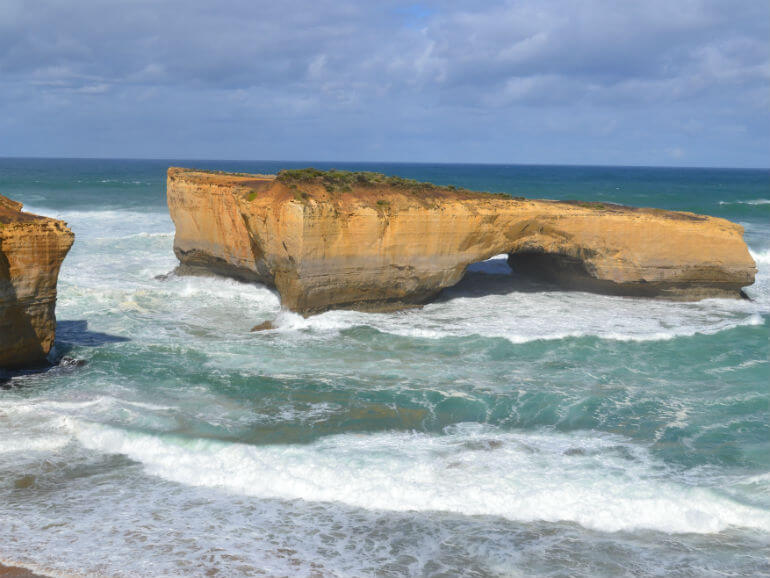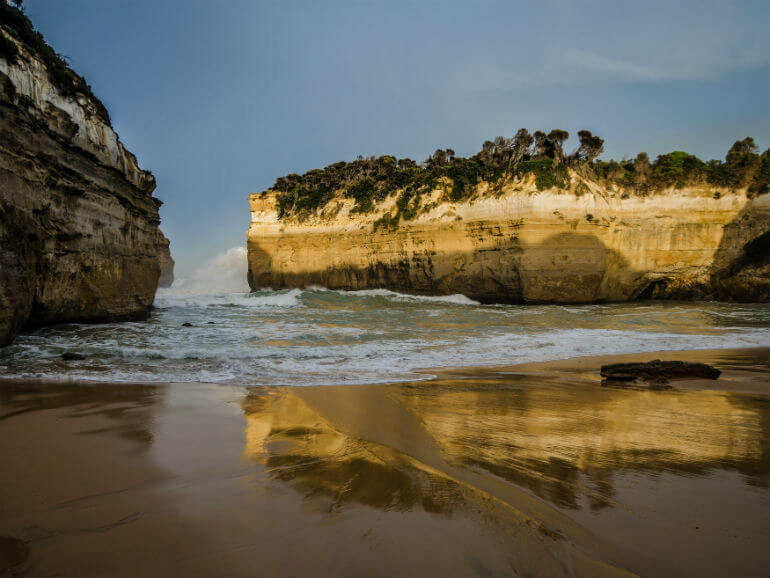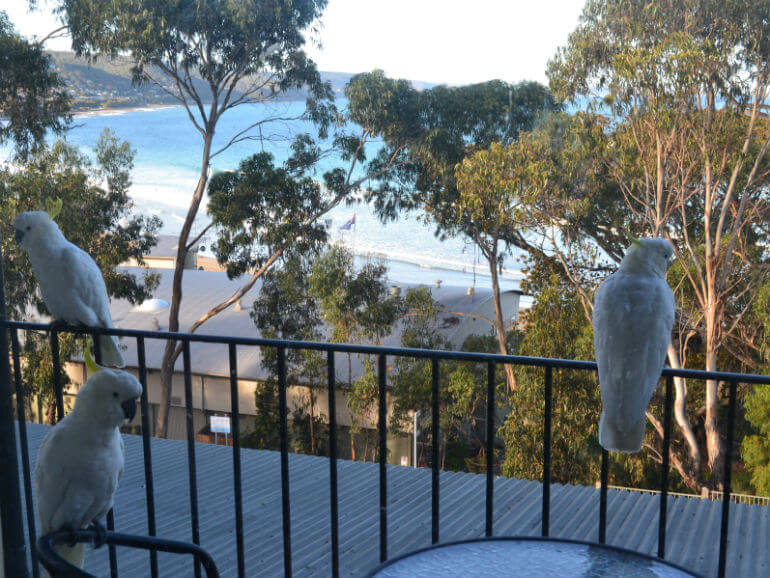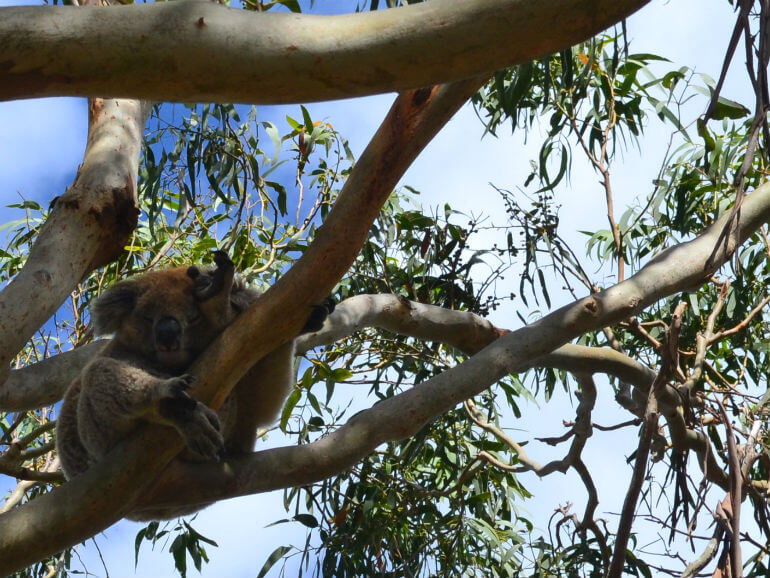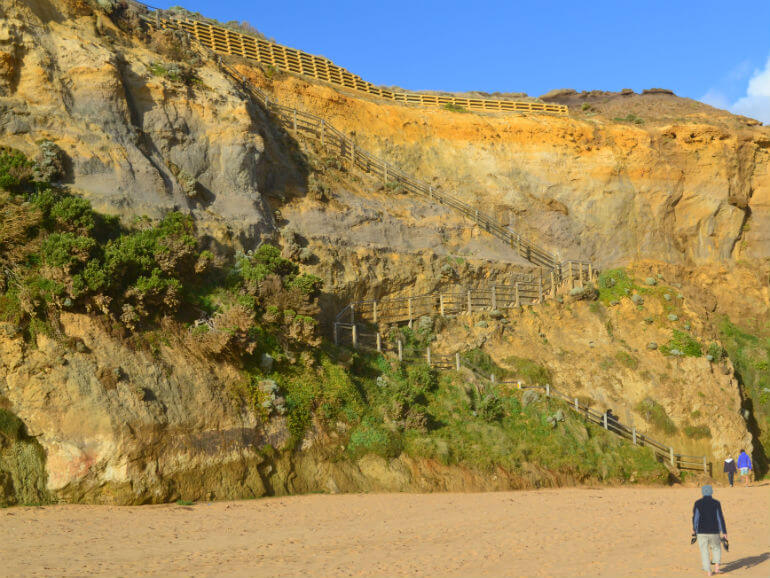Great Ocean Road Ultimate Travel Guide
...everything you wanted to know!
Great Ocean Road Quick Links
Great Ocean Road Map
From Melbourne the Great Ocean Road starts at Torquay and finishes at Allansford.
Torquay is approximately 100 kilometers from Melbourne via Geelong along the M1 then join the B100 to Torquay.
The Great Ocean road follows the B100 for 243 kilometers through to Allansford which is just 10 minutes from Warrnambool.
The B100, replaces the old State road 100, which was the original Great Ocean road designation.
You can then return the 256 kilometers to Melbourne via the A1 and M1.
Should I travel East to West or West to East?
The Great Ocean Road can be traversed in either direction and we have listed the differences here, but before making a decision on the best way to travel, read about the highlights of the Great Ocean Road.
Return to Top
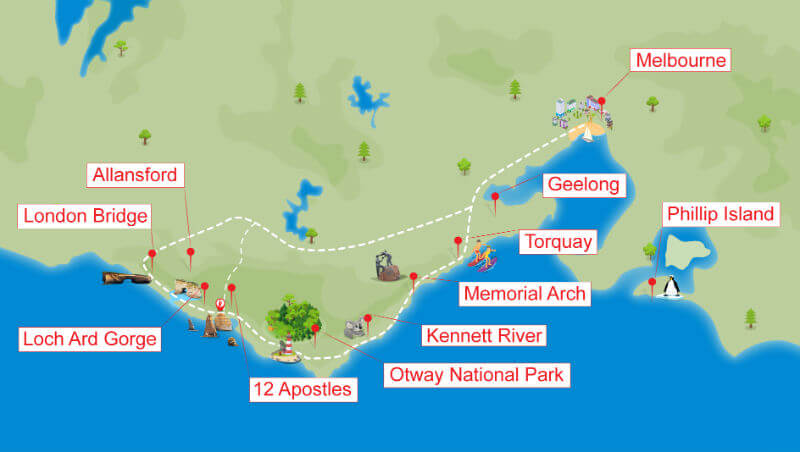
Key Attractions of the Great Ocean Road
The Great Ocean Road is blessed with a large variety of things to see and do, attractions for all ages and for those who might like to sit back more as well as the very active.
The beauty of the Great Ocean Road is it’s diversity and your ability to choose a tour to suit you.
Here is a list of some of the highlights, we have detailed much more in the sections below:
- The 12 Apostles
- London Arch
- Loch Ard Gorge
- Bells Beach (Home of the Rip Curl Pro and don’t forget Point Break)
- Tower Hill Wildlife Reserve
- The Otways
- Great Ocean Walk
- and much more
Return to Top
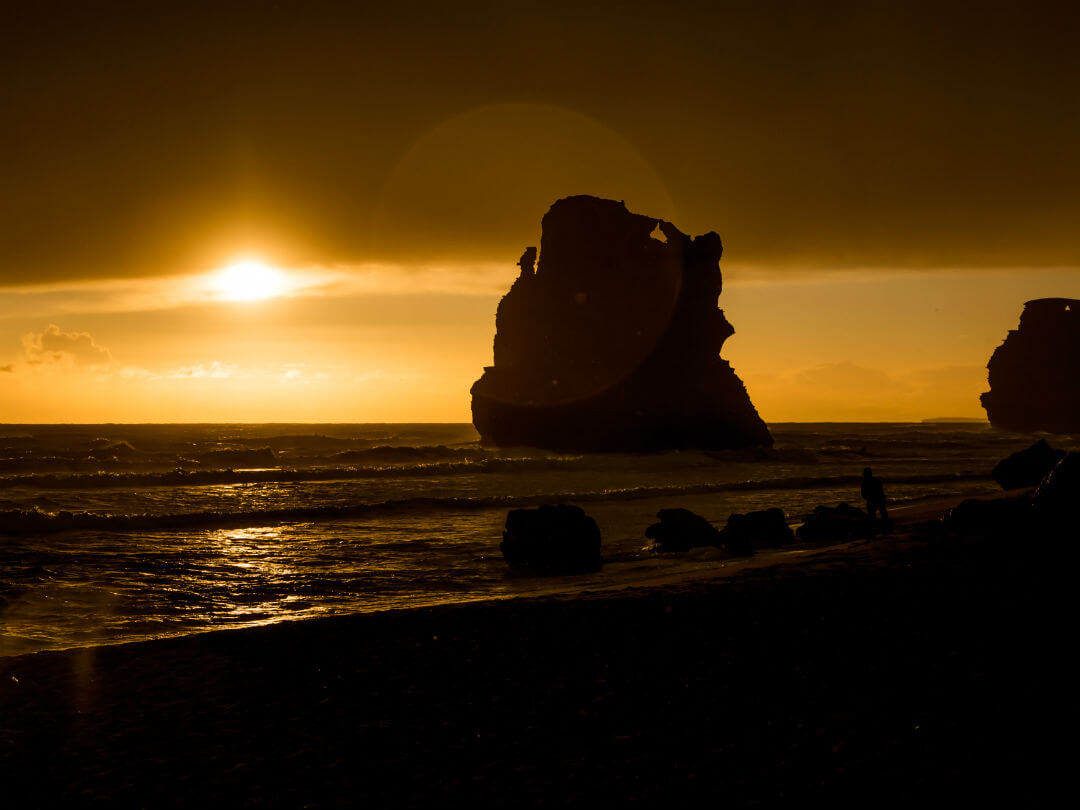
What is the Great Ocean Road
The Great Ocean Road is one of the most spectacular drives in the world, stretching 243 kilometers from Torquay to Allansford, just 10 minutes from Warrnambool.
It was built by returning soldiers from WW1 between the years of 1919 to 1932 and is the world’s biggest War Memorial.
Along the road there are plaques to tell their stories.The admiration for these men is two fold, surviving a war and building the road, by hand, in harsh conditions.
It follows, in part, the coastline known as The Shipwreck Coast which stretches 130 kilometers from Cape Otway to Port Fairy.
Return to Top
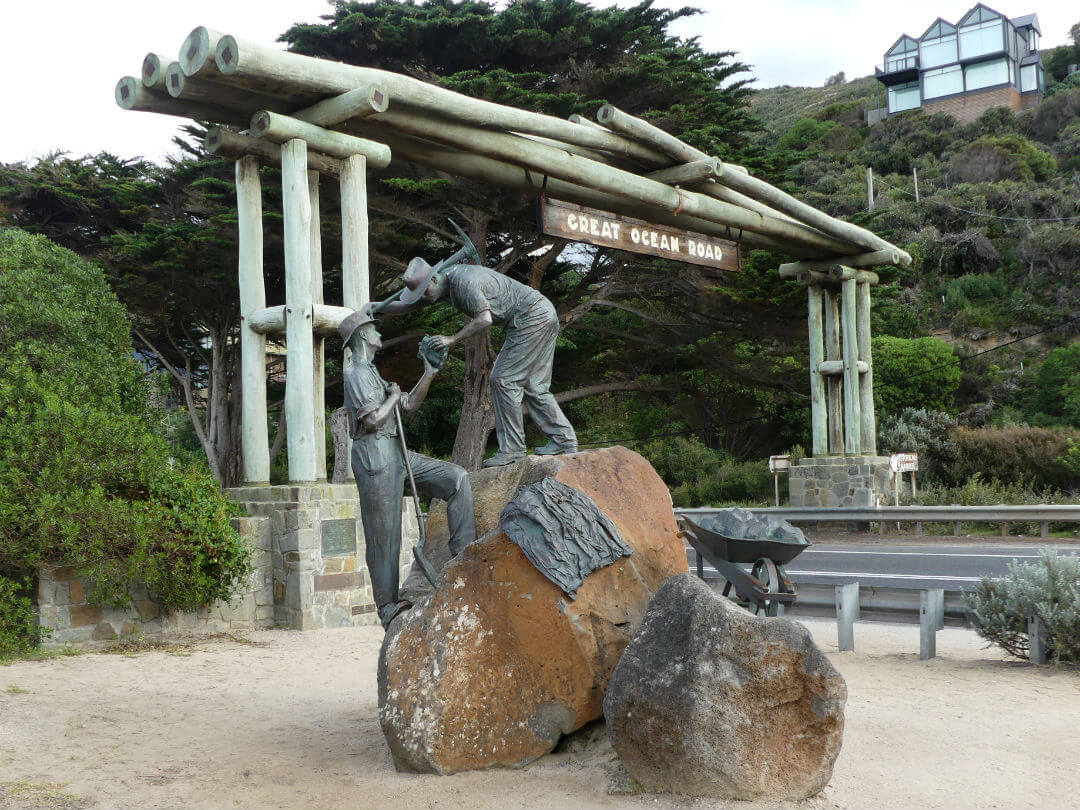
“I have seldom seen a more fearful section of coastline”
Explorer Matthew Flinders said that of the Shipwreck Coast.
To underline this quote over 600 ships have gone down in this area and only just over a third have ever been discovered.
This part of Australia’s coastline is unforgiving, and even on a fine day you can imagine how horrendous the conditions must have been at times.
It doesn’t matter what time of the year you are visiting make sure you take a warm jacket and something in case it rains.
Return to Top
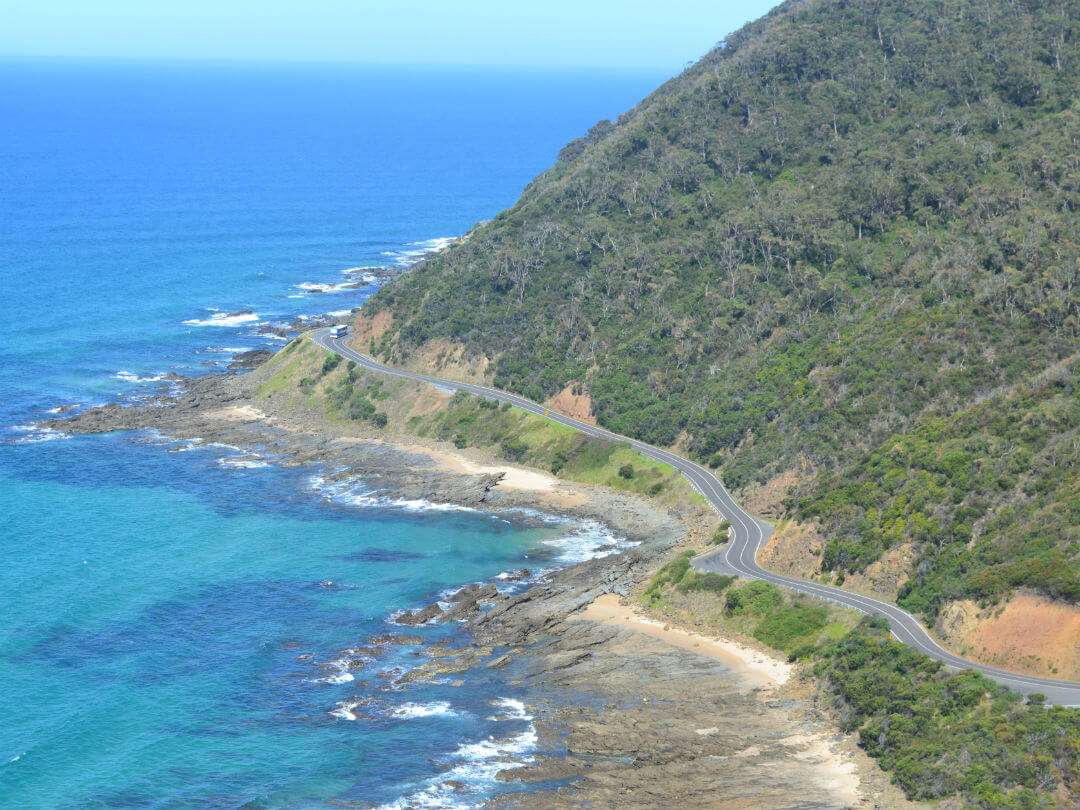
Great Ocean Road Weather
Quick facts about the Great Ocean Road
- One of the world’s great coastal road trips
- Starts an hours drive from Melbourne at Torquay
- Stretches over 240 klm to Allansford.
- Most popular way to visit the Great Ocean Road is a day trip
- Days tours take around 14 hours return to Melbourne
- Extended trips, 2 or 3 days from Melbourne or Adelaide also popular
- Most tours spend between 40 and 90 minutes at the 12 Apostles
- Several other sightseeing stops along the way.
- If your budget allows, include a helicopter flight.
Return to Top
Best time of the year to visit the Great Ocean Road
Summer
You certainly get the best weather along with the most tourists and the highest prices for accommodation. If you love water activities then this is the time to go.
Autumn (Shoulder Season)
Visitors are starting to become fewer, weather becoming cooler and prices coming down.
Winter
Ideal time, less traffic on the road, fewer tourists, better prices but no water activities. There is a bonus, it is Whale Migration Season.
Spring
(Shoulder Season) Another ideal time to visit the Great Ocean Road. It is the best time to see the rainforest as the waterfalls are at their peak. Make sure you take your wet weather protection gear for the rainforest at this time. Nature is also waking up, the flowers are coming out, the wildlife is on the move!
Note: Conditions can change quickly so plan for colder or wetter weather, even if fine and warm.
Return to Top
Standard or Reverse Direction Great Ocean Road tour?
Great Ocean Road Tour Reviews and Blogs
The Great Ocean Road Walk
Great Ocean Road Accommodation
Great Ocean Road Dining
Leaving Torquay
The start of the Great Ocean Road is Torquay, an hour’s drive from Melbourne.
Torquay is where to head for surf. The town is full of surf shops, surf tours and everything else connected with surfing. This is also where Quiksilver and Rip Curl surf brands started and until recently were both their head quarters were.
Just outside of Torquay is Bells Beach, the home of the Rip Curl Pro Easter Classic, the longest running surfing competition in the world. You may not be able to ride the waves the professionals ride first up but there are numerous surf schools to get you started.
Torquay is also the beginning of The Great Otway National Park. The park stretches from Torquay through to Princetown. The park also goes up through the hinterland towards Colac.
The Great Otway National Park has it all, rugged coastlines, sandy beaches, tall forests, ferny gullies, and beautiful waterfalls and lakes.
Return to Top
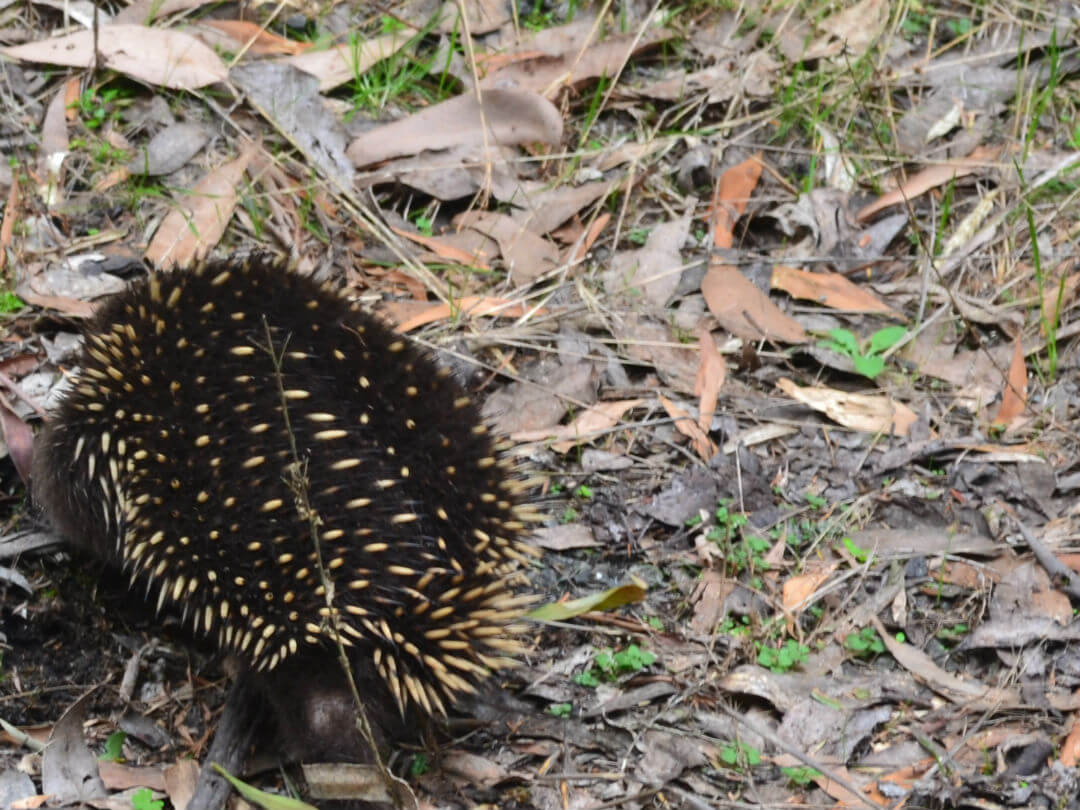
The Original Start
Just past Airleys Inlet, at Eastern View is the historic original starting point of the Great Ocean Road.
In 1922 the first official opening of the road, at that time from Eastern View to Lorne took place. The Great Ocean Road spanned just over 13 kilometers. Memorial Arch marks this spot, so stop and have a read about the Memorial and the significance to the Great Ocean Road.
Lorne is where the bush meets the beach. It has lots to offer, natural beauty, great accommodation for all budgets, wonderful dining experiences, and more. There are 10 waterfalls within 10 kilometers of Lorne. Imagine what a lovely trip that is!
Lorne also hosts the famous “Falls Music Festival”. It starts 28th December through to 1st January and has been running since 1993.
What a magical place to spend New Year’s Eve, high amongst the ancient mountains of the Otway Rainforest.
From Lorne to Apollo Bay is only a 45 minute drive if you don’t stop, although I bet, for some people, it could take almost the whole day.
The rainforest comes down to meet the ocean.
Return to Top
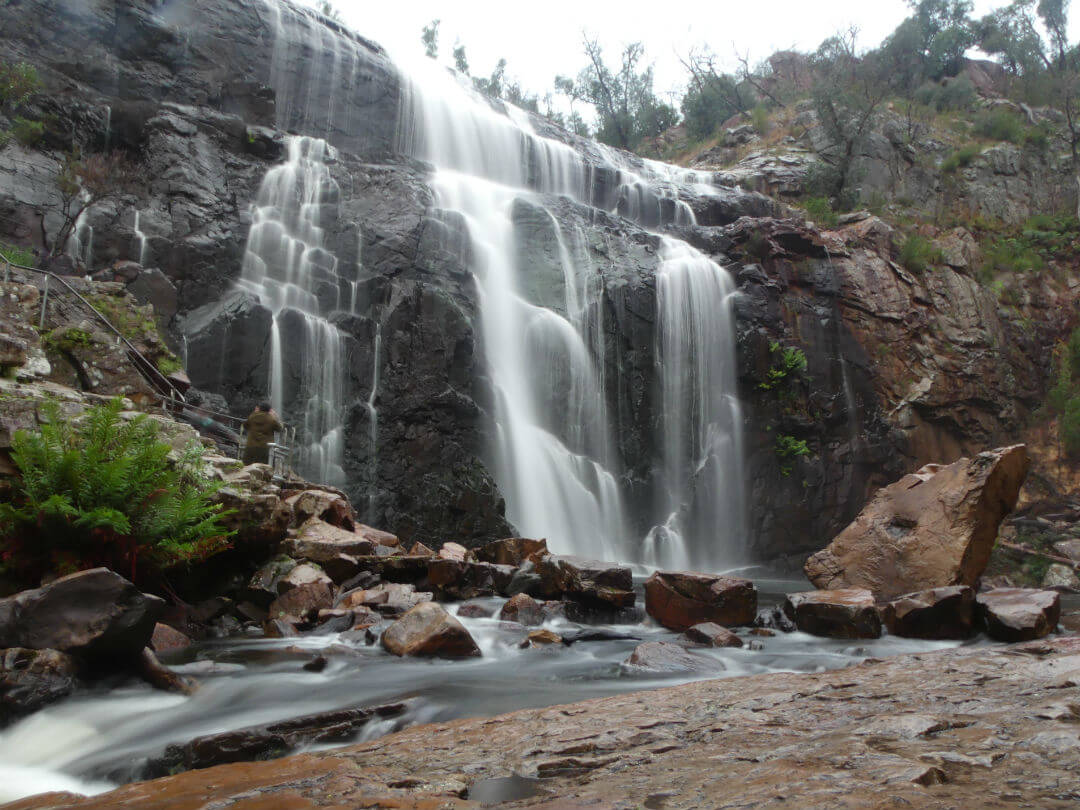
Koalas and other Wildlife
Moving on down the road Cape Patton Lookout is just a short 10 kilometres away.
You cross over Grey River and when you reach Shrapnel Gully, home to koalas.
They are hard to spot during the day but late afternoon they are on the move! Koalas sleep for 20 hours a day!
Just a little further down the road you will arrive at Apollo Bay, and your next stop Kennett River for some more wildlife viewing. Koalas galore!
You will also see King Parrots and Crimson Rosellas.
Return to Top
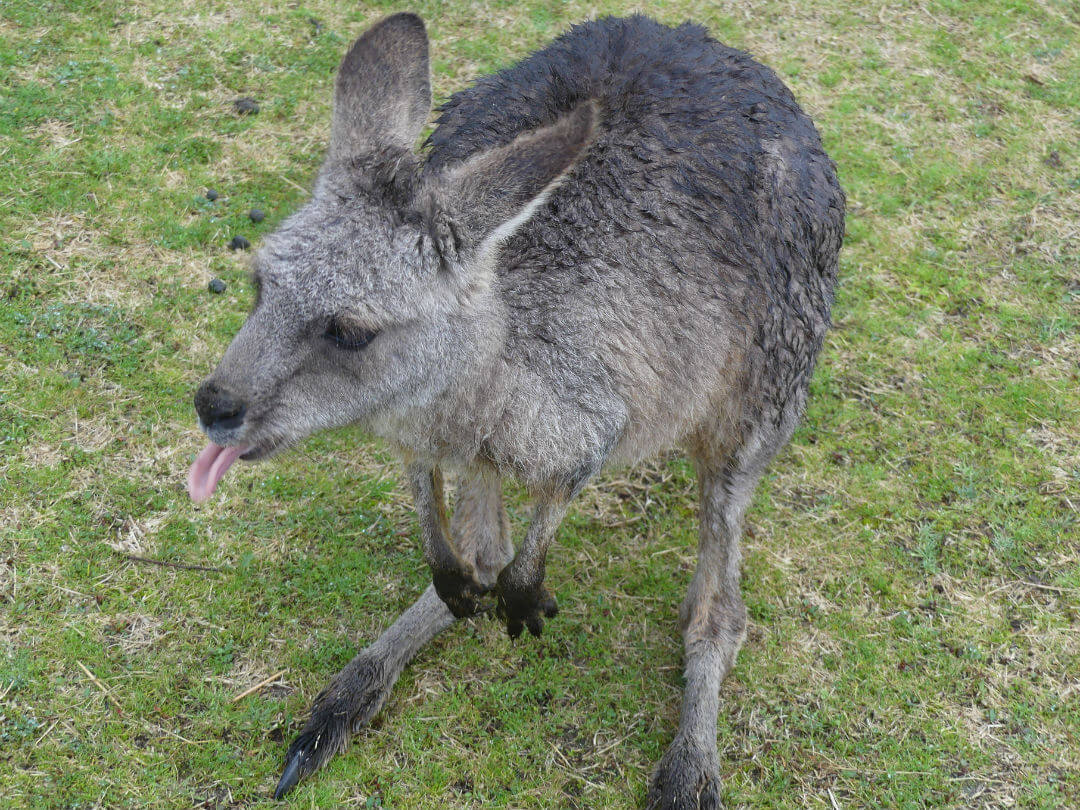
Great Ocean Road Tours
12 Apostles
It is on this leg of the Great Ocean Road that you will see the Twelve Apostles located in the Twelve Apostles Marine National Park.
They are formed by erosion of the limestone cliffs. These stacks are harder at the top and due to the base being softer the erosion follows the path of least resistance.
This initial undermining is what creates the overhangs, arches and eventually new stacks.
The wild Great Southern Ocean and its friend the wind are the reason for the erosion.
Return to Top
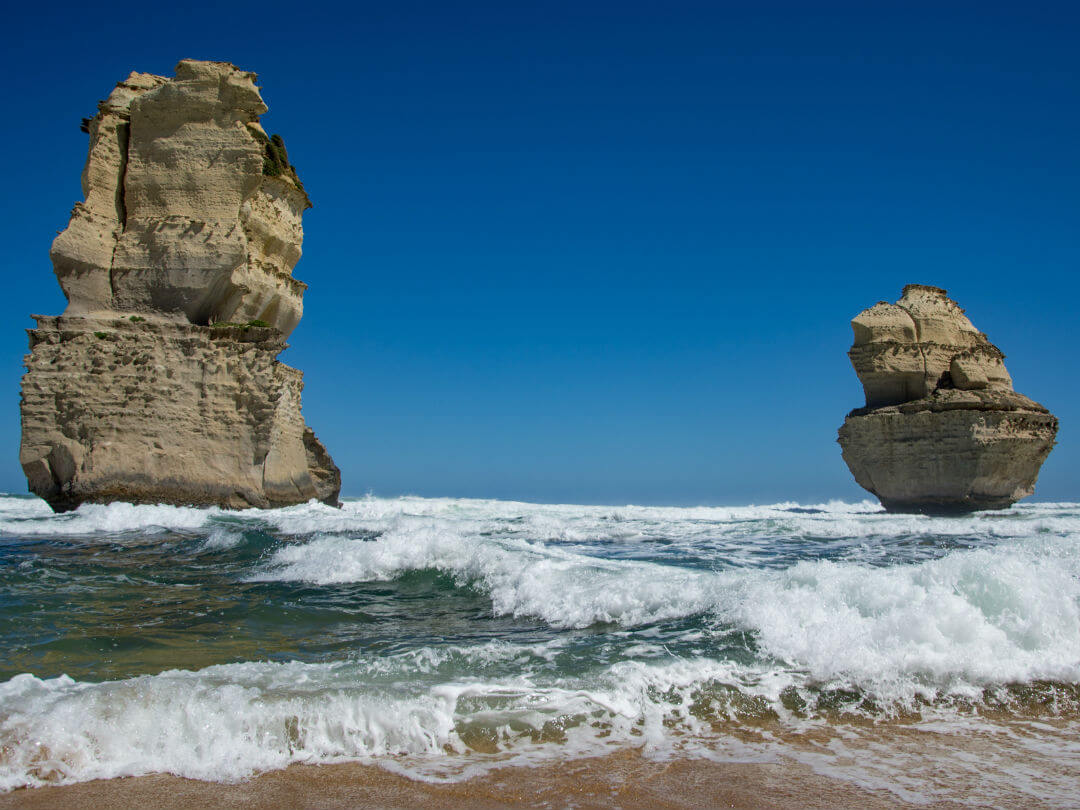
Visitor’s Centre
The Visitor’s Centre is worth a visit before you walk through a 500 metre tunnel under the road itself.
You will come to walkways and viewing platforms.
Gibson Steps will take you down to the beach where you will get another perspective of them being so close to them. You will realise how tall they are (rising 45 metres out of the water).
If time is on your side the Twelve Apostles are at their best at either sundown or sunrise. The colours change before your eyes.
I know it is hard to tear yourself away from these beauties but more await you.
Return to Top
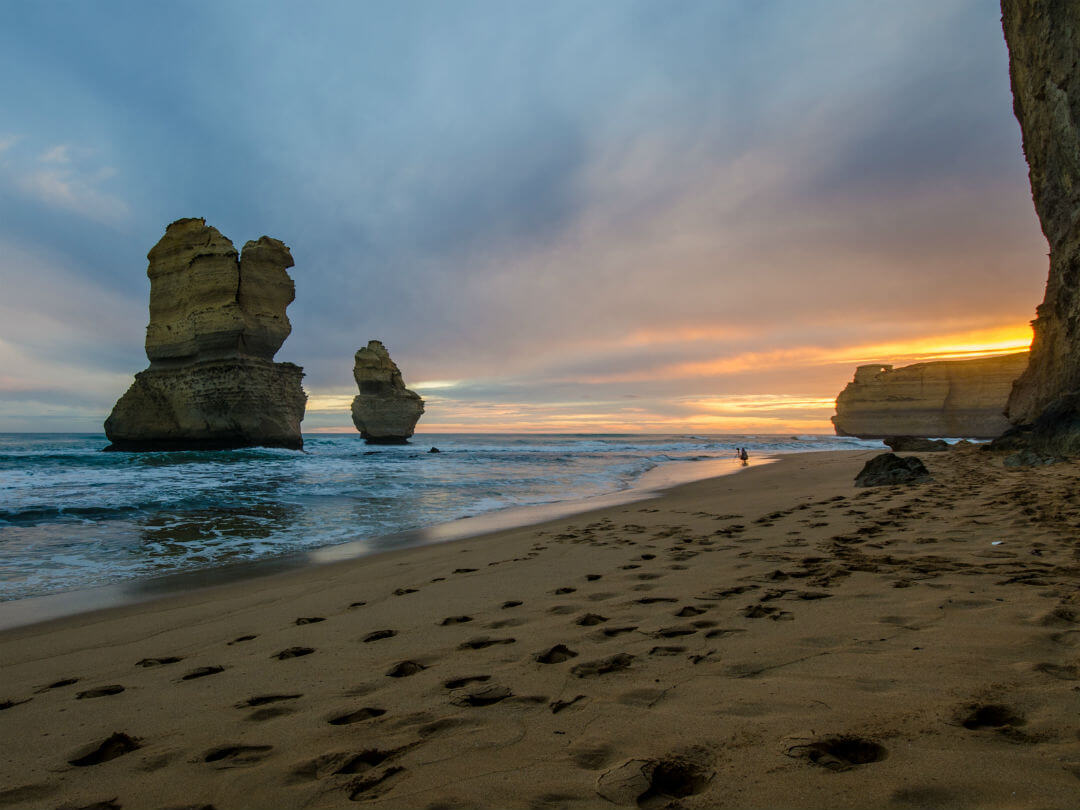
“If time, and budget permits, you should include a helicopter flight”
Loch Ard Gorge
The Loch Ard Gorge is the next beauty you will see.
It is named after the clipper ship Loch Ard which ran aground nearby.
There were only two teenage survivors, Tom and Eva.
In 2009 the nearby Island Archway collapsed leaving 2 pillars and are now known as Tom & Eva.
A lovely story.
Return to Top
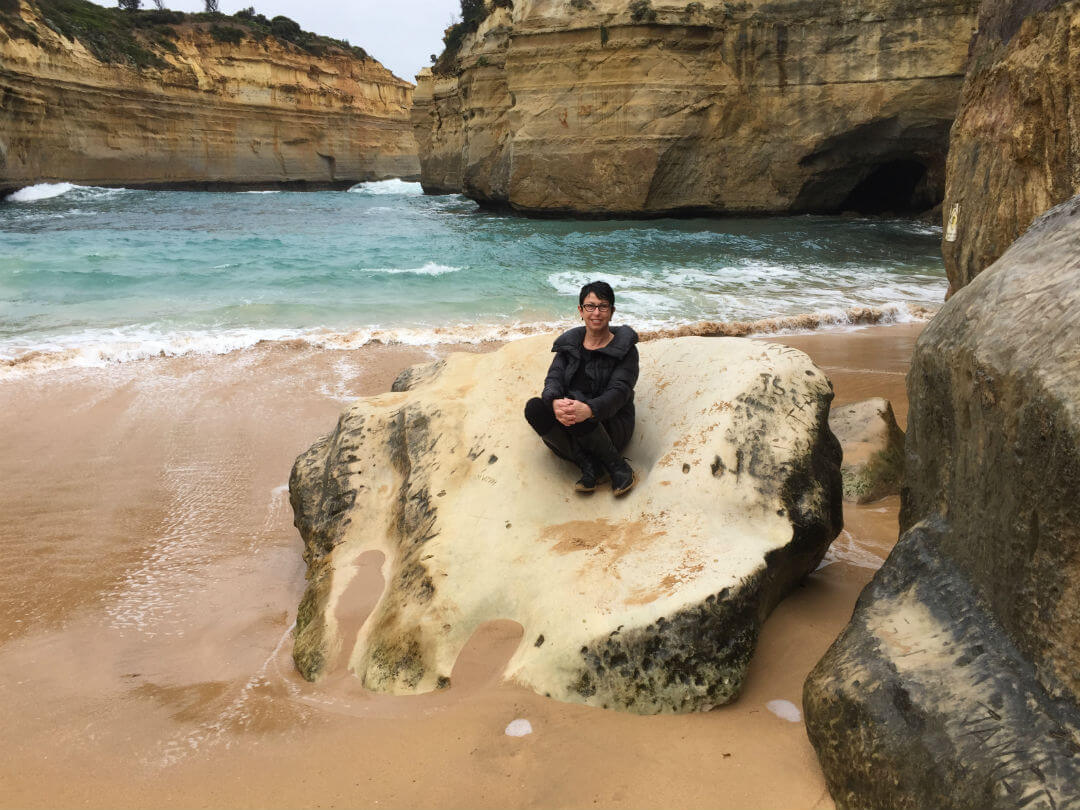
Great Ocean Road Tours
London Bridge or London Arch
London Bridge now known as London Arch since part of the bridge collapsed, has a great tale to it.
The year was 1990, and the collapse occurred on 15 January around 3.00pm.
On the day it collapsed there were two people trapped on the part which didn’t fall into the sea, but was now isolated from the mainland.
The story goes they were lovers and because they had to be rescued by helicopter, their secret was out!
The real story is they were cousins.
This is the first hand account…….
London Bridge is Falling Down!
Dave Darrington assured his cousin Kelly rocks falling into the ocean at iconic landmark London Bridge was perfectly normal.
“We were the only ones there and Kelly and I stood in the middle, as everyone did,” he said.
‘‘She asked if it was safe and I said ‘don’t be stupid, it’s been here for thousands of years.
The next thing he remembers is “it just went bang”. Mr Darrington described the sound of the collapse as like a tree cracking in half.
“We took off into the middle of what is now the island,” he said.
Fear set in for Mr Darrington, who said his first thought was the possibility that the splash caused by the rock falling into the ocean would be strong enough to wash them off the remaining stack.
Return to Top
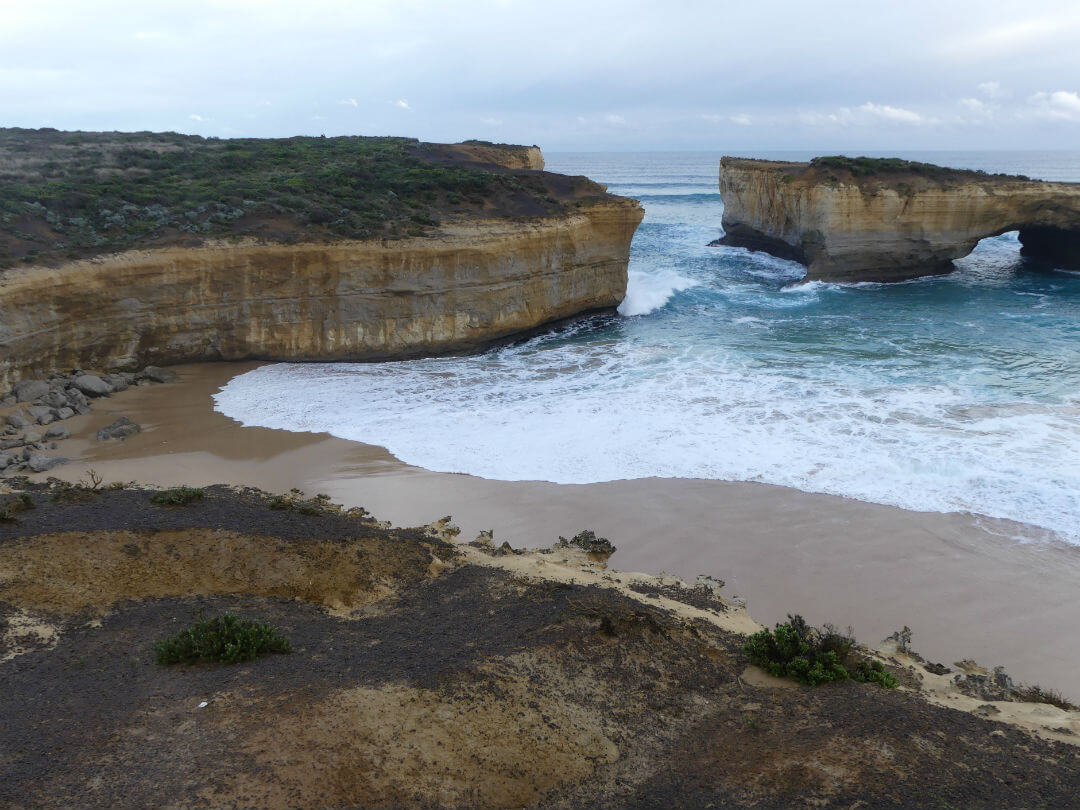
The Journey’s End
Back on the road. The Grotto, located just outside of Peterborough is amazing. Some will say the highlight of the Great Ocean Road. Make sure you don’t miss it and then you will know whether they are right or not!
Just a little bit further and you will see the Bay of Martyrs and the Bay of Islands. Then onto Warrnambool for a rest from one spectacular site to another.
All along this route you will get to taste the local produce and wines of the area. They will not disappoint!
You have done your research, seen countless images of the Great Ocean Road, but nothing prepares you for seeing it yourself for real.
Return to Top
